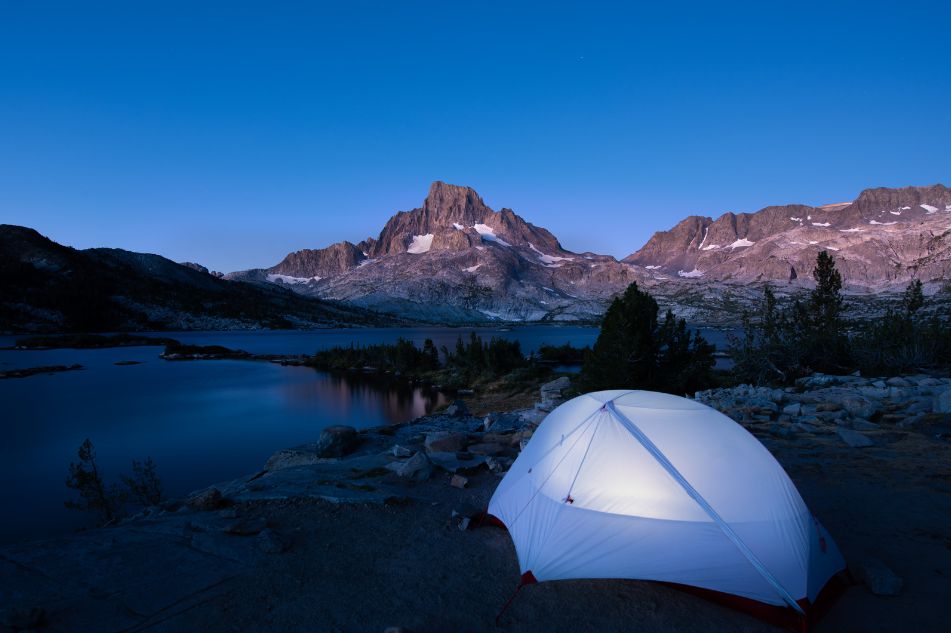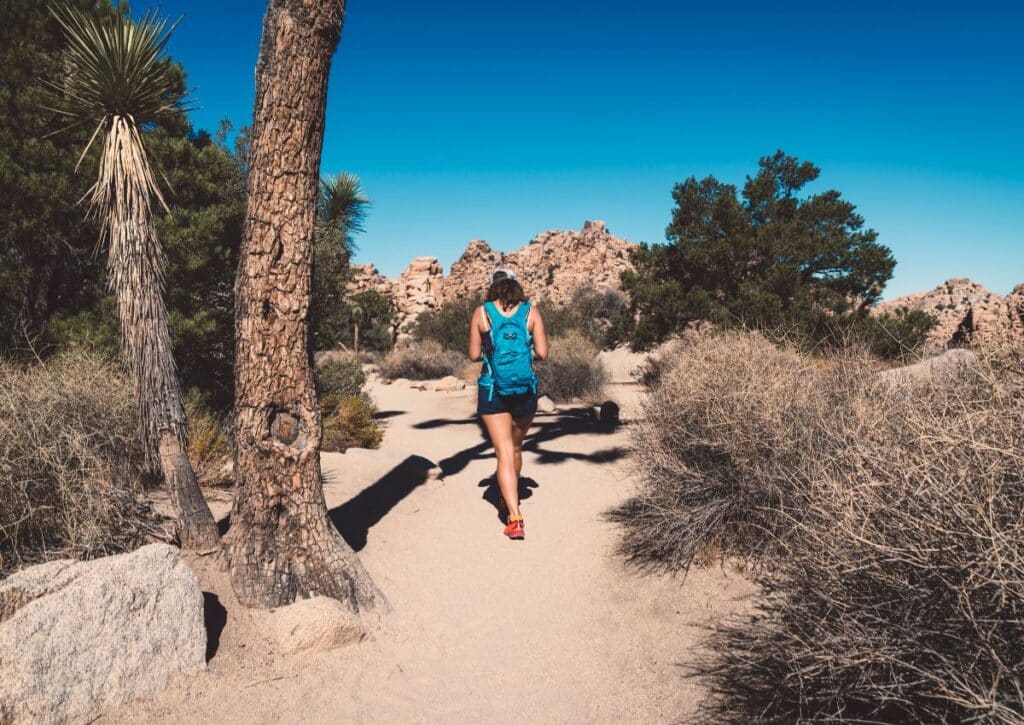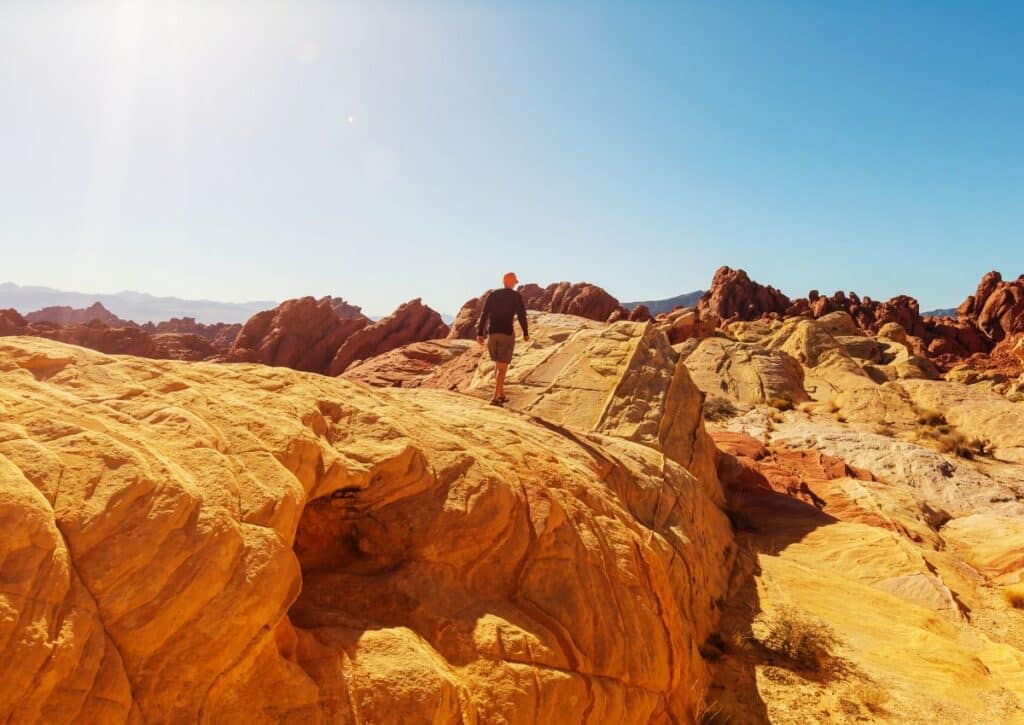Guide to the best things to do in Arches National Park, from scenic drives to hikes. Tips for planning, wildlife spotting, and a 2-day itinerary included.
If you’ve ever been to Arches National Park then you understand why so many people call it one of the best parks to visit in America. This is just one of the many national parks that make up our beautiful country. Whether this is your first visit or your 30th, it’s sure to leave a lasting impression.
If you’re planning on visiting the Arches National Park anytime soon, there’s some things that you definitely need to consider. In this blog post, you’ll learn about the best time to visit, park ranger suggestions and other useful tips.
Explore the Park by Car
If you want to see the park but don’t want to leave the comfort of your vehicle, you can drive the entire park in 2-3 hours.
The Arches National Park is one of the most popular national parks in the United States. This amazing park offers visitors a chance to see some of the most unique and beautiful natural rock formations in the world.
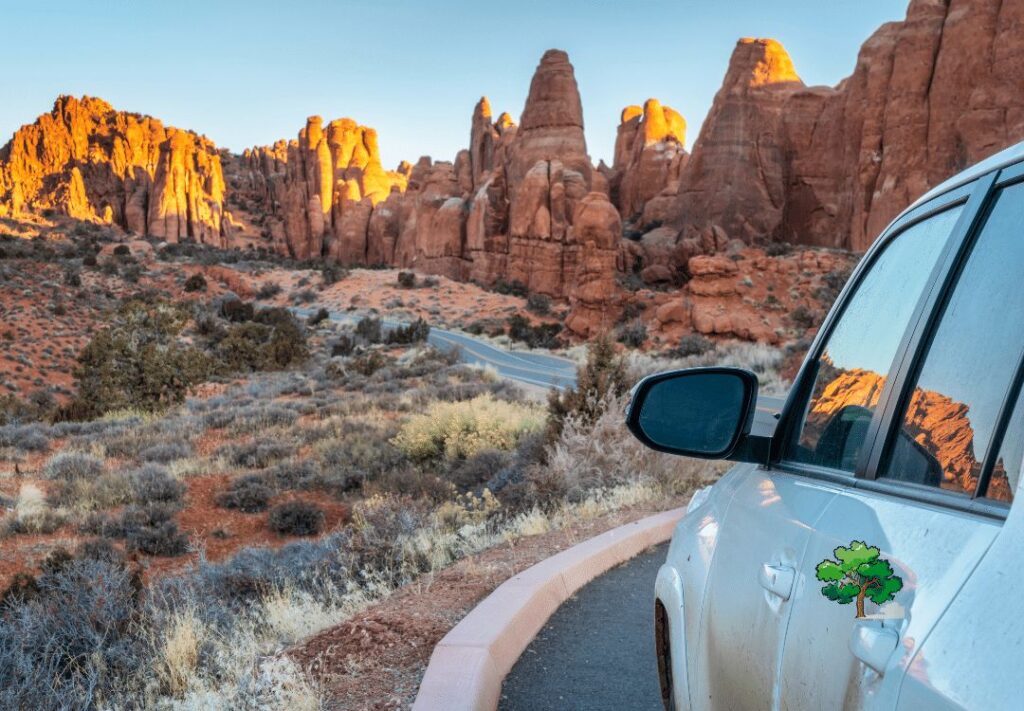
The park features over 2,000 different arch formations that can be seen from anywhere in the park. Visitors can also enjoy hiking trails and scenic drives through this beautiful park.
There are many different ways to explore The Arches National Park by car. The main route through the park is a 16-mile loop road that begins at the Visitor Center and ends at Sand Dune Arch.
This road is accessible year round, but may be closed during inclement weather conditions. There are several scenic overlooks along this route where visitors can stop and take photos of some of their favorite arches or formations.
Another way to explore The Arches National Park by car is by taking a guided tour with an authorized guide service provider. There are several guide services available that offer tours both during summer months (May through September) as well as winter months (October through April).
These tours provide visitors with personalized tours where they will learn about various natural features within The Arches National Park while also enjoying other activities such as photography, hiking or wildlife viewing opportunities
Know the weather and plan accordingly
The best time to visit the arches national park is in spring or fall. Summer temperatures can exceed 100 degrees F. Winter might have shorts snowstorms and icy roads.

You should plan your trip around the weather so that you don’t miss any of the attractions. Some of them are seasonal, and some of them are open all year long, but it’s important to know when they are operating at their peak levels.
For example, if you want to see Delicate Arch in the morning light, then you should plan your trip for early spring or late autumn. If you want to see Double Arch under the full moon rising above it, then plan your trip for late summer or winter. The Arches National Park has many other attractions that are not seasonal but still worth seeing, such as Sand Dunes and Skyline Arch (in Springdale).
The busiest time is the summer months, May through September.
Hike Short and Often
You hear it all the time: “Hike short and often.” That’s the best way to stay safe in the desert. The problem is that many people don’t understand what “short” means.
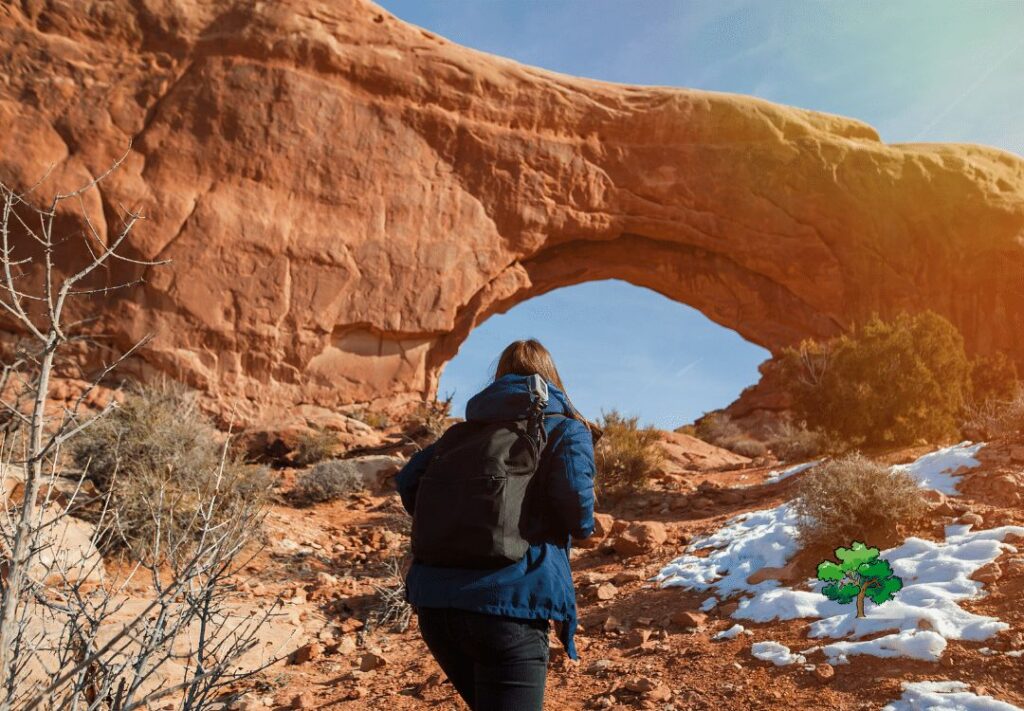
In Arches National Park, a ranger suggested that I hike short and often. He said it’s important to get off your feet every 20 minutes or so, drink lots of water, and eat salty snacks like peanuts or dried fruit.
He said that if you don’t do these things, you run a risk of heat exhaustion or dehydration — both potentially fatal conditions — when hiking in the desert.
See the Arches by Hiking or on Horseback!
Arches National Park is a great place to spend a day or two. There are plenty of trails and attractions to see, which makes it easy to find something that interests you. You can even ride a horse for a guided tour of some of the trails!
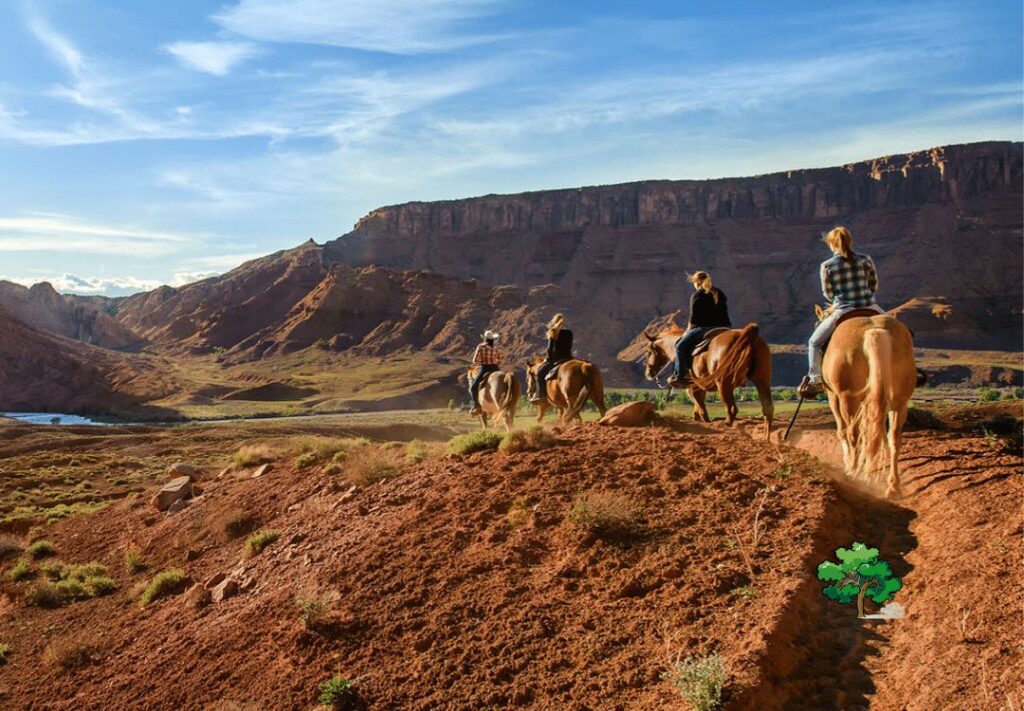
The park offers several different trails for visitors to hike on. One of the most popular is the Delicate Arch trail, which features dozens of arches along its path. The trail is about 3 miles long and takes about an hour to complete. There are many other trails as well that vary in length and difficulty level.
If you’re planning on hiking in Arches National Park, be sure to bring plenty of water and sunscreen so you don’t get overheated while walking through the desert heat. The park also has restrooms along many of the trails so you don’t have to worry about getting caught without one nearby.
If you want more than just hiking though, there are other things to do at Arches National Park besides just walking around admiring nature’s beauty! One popular activity is rock climbing, where climbers will scale huge sandstone formations like they were nothing! Another fun activity is wildlife viewing where you can see all sorts of animals including birds, and mysterious night time creatures!
Start your day Early
If you’re heading to Arches National Park this summer, there are a few things you should know.
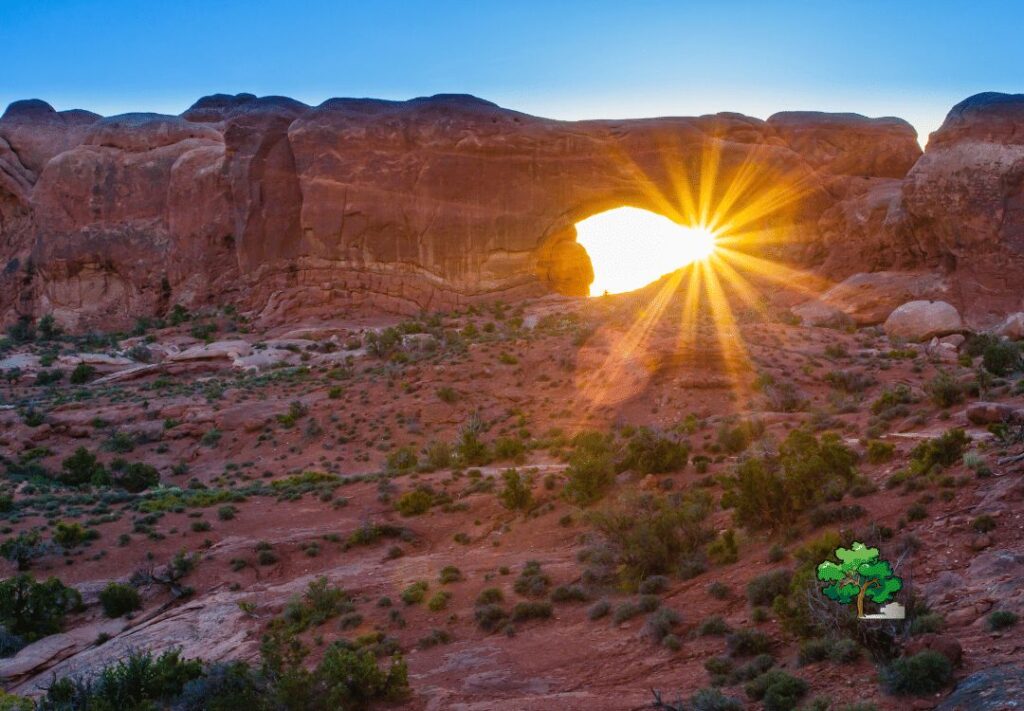
In the arches national park Rangers recommend coming early to avoid the heat and crowds.
The park is open 24 hours a day, but most of its trails close at sunset. If you want to see all of the park’s highlights, plan your trip during the cooler hours of early morning or late afternoon.
Explore on Bicycle
Guided tours are available that include off road areas only accessible by tour vehicles.

Arches National Park is a must-see destination for anyone visiting Moab, Utah. It’s a spectacular place to explore by bike, with an abundance of well-marked trails that range from easy to challenging.
The park offers several different ways to get around on two wheels:
Bike rental: Visitors can rent bikes from Moab Recreation Center and ride along the Colorado River Trail, which runs through the park for 10 miles. The trail is paved and has few hills. It’s available for both mountain and road bikes.
Bicycle tour: Several companies offer guided bicycle tours through Arches National Park. These tours are particularly popular during the warmer months, when there are fewer crowds at the park and more opportunities to see iconic formations like Delicate Arch and Balanced Rock without bumping into other people.
For example, Adventure Cycling Association offers three different guided bike tours in Arches National Park that range from semi-private rides (with one guide per eight riders) to private rides (with one guide per two riders).
You can bicycle on the road through most of the park. You will need knee and elbow pads, water and food if you plan to bike long distances.
Camping at Arches
The arches national park campground is located in the middle of a desert, but the scenery is beautiful. The campground is divided into two sections: Devils Garden Campground and White Rim Campground. Both of these campgrounds offer a different experience and have their own advantages.
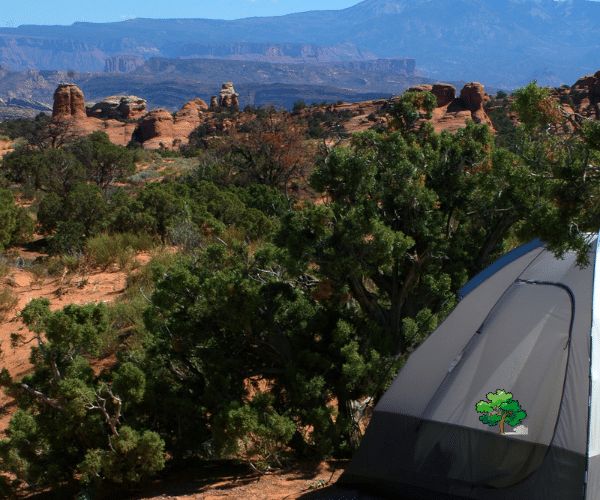
If you’re looking for an outdoor adventure, the Devils Garden Campground is a great place to start. This section of the park has a lot of trail options that are easily accessible from the campsite. You can hike up to Landscape Arch, which is one of the longest arches in the world, or walk through Double O Arch and Tunnel Arch. There are also plenty of trails along Salt Wash Road that lead to other parts of Arches National Park (if you want to see more than just one part).
If you’re not interested in hiking but still want to see some amazing scenery, there are plenty of places where you can look out over the landscape without leaving your vehicle. These views are especially impressive at sunset when they’re reflected off the red rocks below them.
Section: There are 4 campgrounds in Arches National Park open year round. Each site has a picnic table and grill. Tent camping requires a two-mile hike into Devil’s Garden Campground but offers incredible views not seen anywhere else in the park!
Abundant Wildlife
Arches National Park is a great place to explore the wildlife in the park. While there are many animals that live in the park, you may find that certain animals tend to stick to certain areas and trails.
Coyotes are often seen around the visitors center in the morning. You may also see them along the Windows and Devils Garden Trails. If you are lucky, you can even hear them howling at night!
Bighorn sheep live throughout much of Utah but they are most commonly found in Arches National Park. They can be found on any of the hiking trails but are most commonly spotted on the Delicate Arch Trail.
Mule deer are another common animal in Arches National Park. They can be seen year round but especially during hunting season from October through December.
You can spot the peculiar kangaroo rat here!

The kangaroo rat is a small rodent found in the deserts of the southwestern United States and northern Mexico. It lives in burrows, and it has large hind legs with which it hops.
Kangaroo rats are solitary creatures that live underground, coming out only at night to forage for food or water. They have a long tail that they use as a balance when hopping around their burrow systems. Their fur is always light in color so that they can blend into their surroundings while they hop around looking for food.
The kangaroo rat gets its name from its ability to hop away from danger or predators with its long hind legs and tail as a counterbalance. This amazing ability has also earned them the nickname “hopping mouse.”
What can you not miss in Arches National Park?
Arches National Park, located in southeastern Utah, boasts over 2,000 natural stone arches, alongside a myriad of impressive rock formations, mesas, and balanced rocks. The most iconic landmark in the park is Delicate Arch, a freestanding arch that’s been featured on Utah’s license plates.
A short yet moderately strenuous hike will bring you up close to this magnificent structure, providing an awe-inspiring view, especially during sunset. Equally significant are the North and South Windows, Double Arch, and Landscape Arch, which is one of the longest natural arches in the world.
The Fiery Furnace, a labyrinth of narrow sandstone canyons, offers a challenging hike and is best explored with a ranger-led tour to avoid getting lost.
What activities are available at Arches National Park?
Arches National Park provides a plethora of activities for its visitors. Hiking is the most popular, with trails ranging from easy walks to challenging hikes. Some of the must-visit trails include Delicate Arch Trail, Devils Garden Trail, and the Fiery Furnace hike.
Besides hiking, the park offers ranger-led programs, providing insight into the park’s geology, history, and environment. These programs often include guided walks, evening campground talks, and special children’s activities. Photography enthusiasts will find a paradise in Arches, with the rock formations offering spectacular photo opportunities, particularly during sunrise and sunset.
For those interested in stargazing, the park, designated as a Gold Tier International Dark Sky Park, has minimal light pollution, making it an ideal location to observe celestial events.
How many days do you need at Arches National Park?
Ideally, spending three to four days at Arches National Park will allow visitors to thoroughly explore the main attractions and partake in a variety of activities. This duration provides ample time to hike most of the major trails, attend ranger-led programs, capture photographs at different times of the day, and enjoy some leisurely exploration without feeling rushed.
Is 2 days enough for Arches National Park?
Two days in Arches National Park is sufficient to see many of its highlights. In this timeframe, visitors can hike to Delicate Arch, explore the North and South Windows, and visit Landscape Arch. It also provides time to drive along the scenic roads and make short stops at viewpoints and other notable formations. However, two days might feel a bit rushed if you aim to undertake longer hikes or wish to experience the park more leisurely.
Which is better Bryce or arches?
Choosing between Bryce Canyon National Park and Arches National Park is subjective as both offer unique landscapes and experiences. Arches is renowned for its impressive natural arches and vast red rock expanses. Activities here are centered around viewing the arches, with hikes ranging from easy to moderate.
Bryce Canyon, on the other hand, is famous for its hoodoos – irregular columns of rock formed by frost weathering and stream erosion. The park offers sweeping vistas from the rim and more strenuous hikes in the canyon. If you’re intrigued by natural stone arches and vast landscapes,
Arches might be more appealing. But if you’re drawn to unique rock formations and expansive viewpoints, Bryce Canyon might be your choice.
How long does arches scenic drive take?
The Arches Scenic Drive, which takes you deep into the heart of the national park, is approximately 36 miles (58 km) round trip. Without stopping, the drive takes roughly an hour.
However, with the numerous viewpoints, trailheads, and attractions along the way, most visitors will spend 2 to 4 hours on the drive, allowing time for short walks, photographs, and appreciation of the stunning rock formations.
My Personal 2 Day Itinerary to Arches National Park
Day 1: Dawn till Dusk – Embracing the Arches
Morning: Get an early start to your day to witness the park in the soft, ethereal light of dawn. Arches National Park is home to over 2,000 natural stone arches and a plethora of rock formations, each having its unique allure. Begin at the Arches Visitor Center where interactive displays paint a vivid picture of the park’s history, ecology, and geology.
Once familiarized, explore the park by car. The scenic drive is the perfect introduction, bringing you face-to-face with mesas, balanced rocks, and the park’s signature arches. Make your first stop at Park Avenue Trail. This 2-mile round trip offers a splendid walk through towering cliffs, echoing the grandeur of a historic city avenue.
Afternoon: Break your journey with short, frequent hikes to truly immerse yourself in the park’s beauty. A moderately strenuous hike will take you to Delicate Arch, the park’s most iconic landmark and a symbol of Utah itself. The sight of this freestanding arch, especially against the backdrop of the La Sal Mountains, is awe-inspiring.
Post Delicate Arch, venture towards The Windows Section. Here, the North and South Windows, as well as the Double Arch, await your admiration. The setting sun casts golden hues on the arches, making for an enchanting sight.
Evening: Conclude your day at a campsite if you’ve opted for camping at Arches. The night sky, unpolluted and vibrant, is a spectacle in itself. As you lie beneath the stars, listen to the nocturnal sounds, a testament to the park’s abundant wildlife.
Day 2: Delving Deeper into the Desert
Morning: Another early start is recommended. If you’re up for a slightly different experience, explore the park on a bicycle. The trails, with their challenging terrains interspersed with mesmeric views, promise an exhilarating experience.
Next, head to Devil’s Garden. Home to Landscape Arch, one of the world’s longest natural arches, the area provides a sense of the vastness and wonders of nature’s craftsmanship.
Afternoon: The Fiery Furnace beckons next. This maze of narrow sandstone canyons offers a unique hiking challenge. Given its intricate pathways, it’s advisable to opt for a ranger-led tour. Not only does this ensure you don’t lose your way, but the rangers also offer nuggets of information, enriching your experience.
For those keen on experiencing the park from a unique vantage point, consider exploring on horseback. The park’s landscape, with its myriad of arches and rock formations, looks even more magnificent when explored in this leisurely manner.
Evening: As your two-day sojourn comes to an end, find a tranquil spot to watch the sunset. The interplay of shadows and light, the red rocks bathed in a warm glow, is a fitting finale to your Arches adventure.
Conclusion
With the help of this blog post, you’re on your way to creating the best possible experience while visiting Arches National Park. You’ll want to share these tips with anyone who will be joining you on your trip or who has plans to visit in the future.


